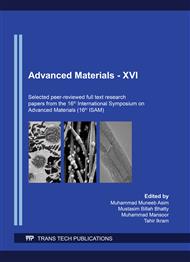p.211
p.219
p.227
p.238
p.248
p.259
p.266
p.272
p.280
Decipher Ultrasonic Signals from Defects in Thick Aluminum Extrusions to Identify Type and Origin of Defects
Abstract:
Manufacturing of thick seamless pipes of age-hardenable aluminum alloys are a specialized technology since their application is limited to specific hi-tech areas. Quality criteria for their inspection are propriety items of the very few production facilities that develop these criteria in-house. Present study relates ultrasonic signals reflecting back from non-continuities in the thickness of seamless pipes with their microstructural features. Detailed study of defects leads to the source of their formation and will ultimately help to systematically control them. Signals from ultrasonic testing trace defects as UT waves reflect back from discontinuities in the material. Defective sections of seamless pipes were cut with precision to reveal the defects. The sectioned surfaces were subjected to metallographic preparation and revealed defects were studied using Optical and Field Emission Scanning Electron Microscopes (FESEM). Defects are grouped based on the shape of UT signals as well as the defect morphology as revealed by microscopic studies. Most of the observed cracks are found to grow in the direction of extrusion. Energy Dispersive Spectroscopy (EDS) analysis was conducted to determine the composition of inclusions in the vicinity of the defects. Data from elemental analysis is used to identify the potential sources. The study recommends measures to control the defects and improve the yield.
Info:
Periodical:
Pages:
248-255
Citation:
Online since:
February 2021
Authors:
Price:
Сopyright:
© 2021 Trans Tech Publications Ltd. All Rights Reserved
Share:
Citation:


